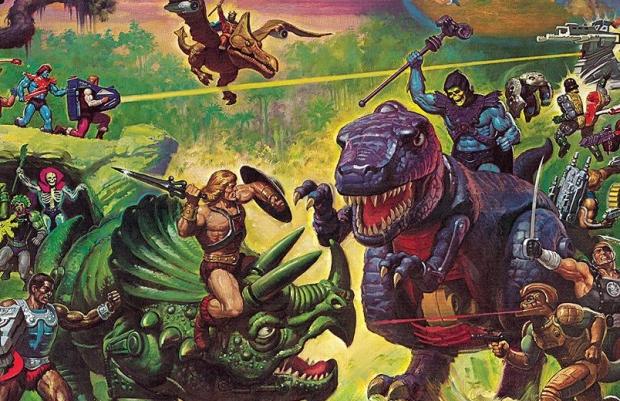Whether you’re writing fiction, designing a game, or creating non-traditional extreme narrative experience that defies definition, you’re probably going to stumble onto a common world-building problem:
We’ve seen it all before!
- A fantasy world with some combination of elves, dwarves, dragons, and/or politics?
- A sci-fi setting with spaceships and laser guns?
- A world like our own, but with [some fantastic element]?
- A post-apocalyptic anything?
If your world ticks any of these boxes… it’s already been done. Probably hundreds of times. Probably by properties hundreds of times more well-known than whatever you’re working on.
(And of course when I say you, I mean me. Ghost Punchers, Steel Dragons, Karthador… they’re my babies and I love them, but their basic premises have all been seen before.)
The Paradox
Here’s the thing, though: while the world you’re working on has been done before, the fact that you are working on it is guaranteed to make it unique. Because you’re unique. No matter how well-worn the storyworld concept may be, your distinct voice–your history, your passion, your perspective–will make this specific interpretation of the world different from all those that have come before.
The question: How can you make sure your world is different enough?
The answer: Find your hook.
The Hook
Your storyworld’s hook is the one thing that makes it stand out from the other worlds around it. This is the twist, the unexpected ingredient, the element that’s often preceded by the words “but with.” (“It’s cyberpunk, but with elves!”) This helps define your niche in the genre, and what differentiates your world from everyone else’s.
There are lots of ways to find your hook, but here are some of my favorites:
- Look Inside: The first and most obvious technique is examine yourself and see why you want to create this storyworld. What is it about this world that inspires you, excites you, or intrigues you more than the similar worlds that already exist? Identify that thing, and you’ve got your hook.
- Rethink Tropes: Recurring types of storyworlds (Tolkien-esque fantasy, space opera, etc.) are often full of common tropes. That’s fine. Tropes help make a world accessible to newcomers. But to make your world stand out, identify some tropes to twist, invert, or replace with a metaphorical smoking crater. Maybe your nigh-immortal elves aren’t aloof dispensers of cryptic wisdom, but gutter-dwelling drunkards always looking for a fight. Maybe your space opera doesn’t have spaceships. Maybe your modern-day vampires are closer to wasp colonies than clans of beautiful seducers.
- Twist the Characters: Insert new types of characters into your storyworld: mech pilots into your fantasy world, ninjas into your sci-fi galaxy, or accountants in your modern horror dystopia. Or twist an established character type. Maybe knights in your world are all women who have alien symbiotes ritually implanted onto their spines?
- Find a New Conflict: What if the conflict in your epic high fantasy world isn’t between the forces of good and evil, but between the rich and the poor? The land-dwellers and ocean-kind? The local nobles and the nobles from the moon?
- Tweak the Tone: Is your world funnier than those around it? Darker? More heroic, melodramatic, or romantic (in either sense of the word)? Maybe it should be. (For example, one thing that helps separate Ghost Punchers from other modern horror worlds is its darkly humorous tone.)
Your storyworld has been done before. Acknowledge it. Accept it. Then move on to find the hook that makes the world truly yours–and makes the world stand out from the crowd.

